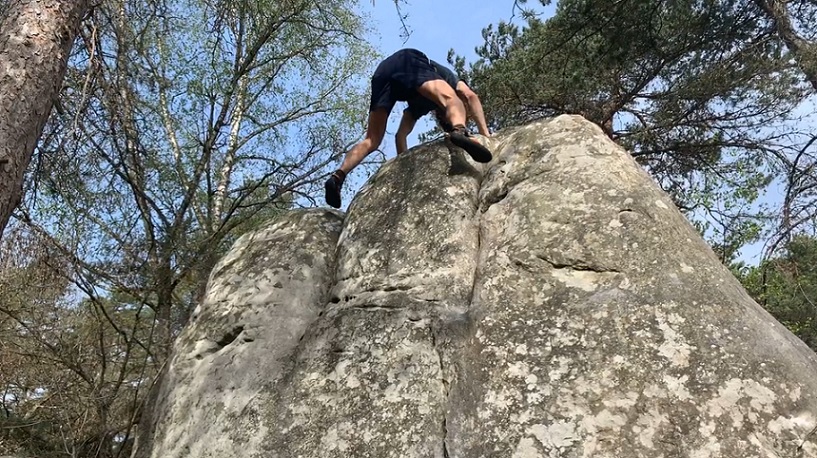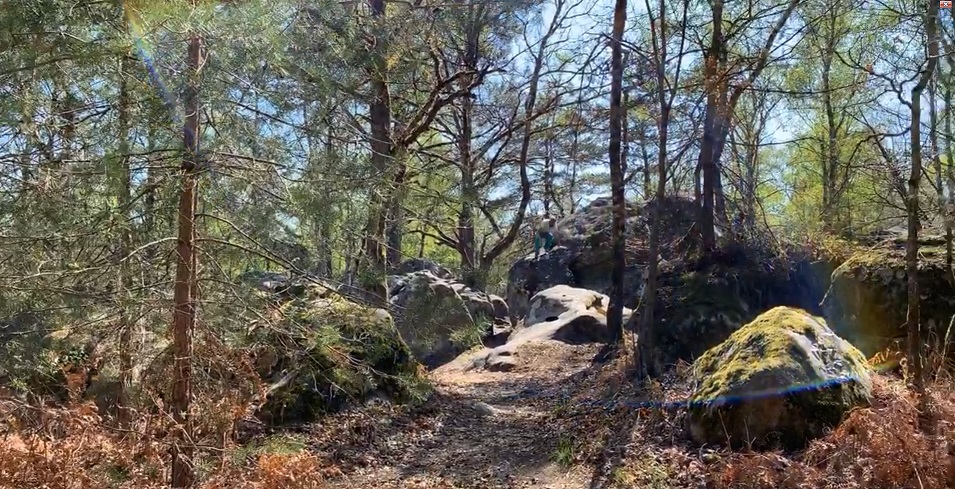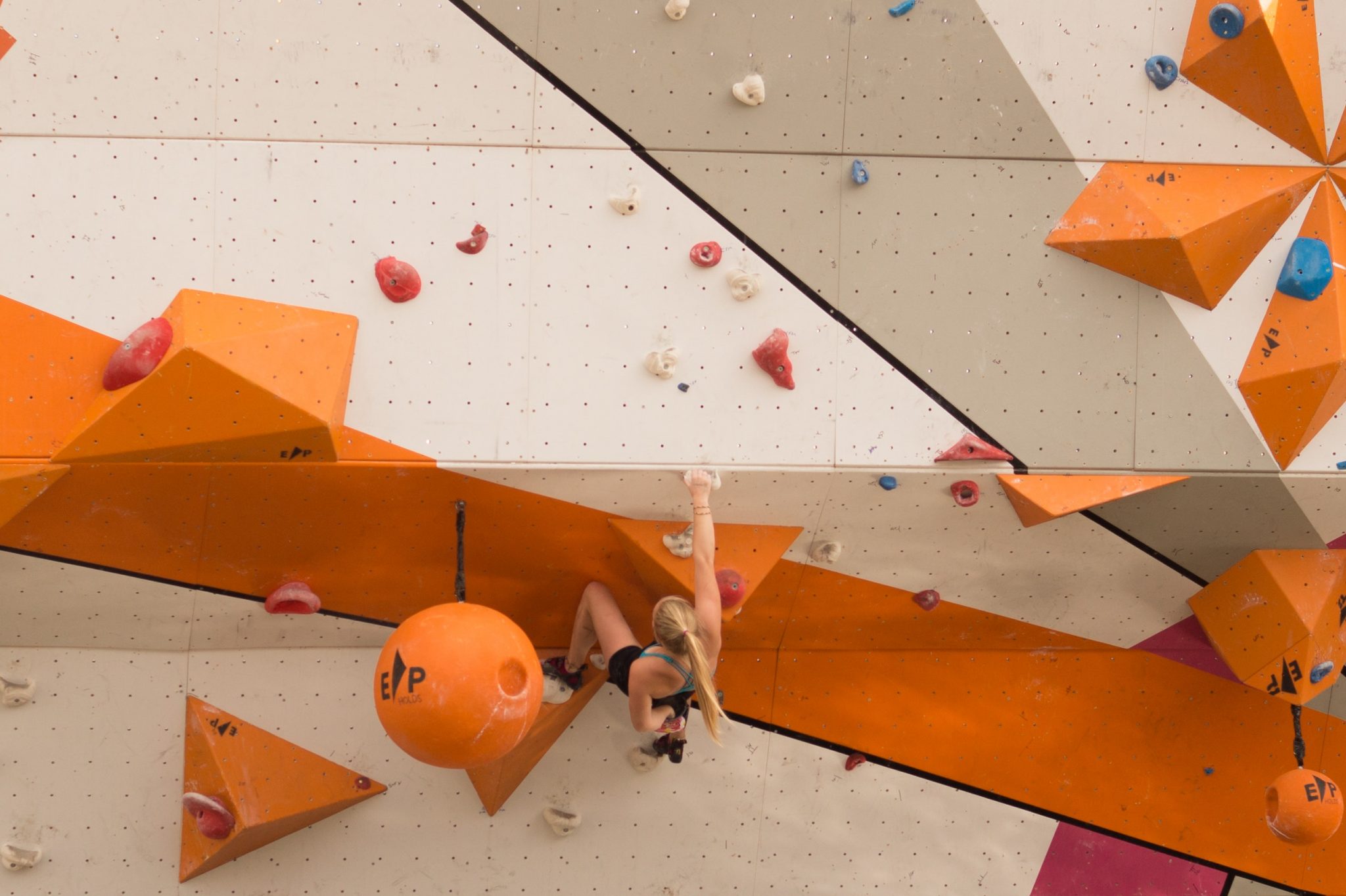Fact or fiction: is indoor bouldering nothing like bouldering outside?
In this article I will dispel some myths and tell you exactly what the differences are between outdoors and indoors bouldering.
So, to cut to the chase, are the differences between bouldering in the gym or on real rock really that big?
In my opinion, the answer is yes: there are significant differences between indoor and outdoors bouldering, and I’ve listed 12 of them below.
The main difference between the two is that routes are less obvious on real rock than in the colourful simulation inside the climbing gym. Other differences include uncertainty about the robustness of the rock and the traction that the rock surface provides. Bouldering outdoors is scarier, the grades are harder, and it requires different techniques to be used more often than its indoor counterpart.
The good news, though, is that indoor bouldering can definitely help you prepare for outdoors bouldering, no matter how big these differences are!
Let’s jump right into the main areas of conflict between the two disciplines:

1. Rocks can break off
It’s scary when you’re uncertain about whether a hold will break or not the moment you put your entire weight on it.
Typically, you will encounter smaller holds and edges when climbing outdoors. Depending on the type of rock, you will find yourself wondering quite often whether the rock you’re holding on to can support the pressure you’re putting on it with your body weight.
Especially in salty or acid environments rock can look sturdy while they’re actually subjected to corrosion for a long time. It’s advisable to read up on the kind of rock you’ll encounter on your next trip to get a general idea of the likelihood that holds will break.
2. The grades are harder
I guess bouldering gyms like to make you feel good about yourself and exaggerate the the difficulty of the grade you’re climbing.
I can understand why: new climbers are encouraged by their progress and will come back for more.
And that’s a good thing!
Still, you need to be prepared to be humbled when you’re going to boulder outside for the first time. There’s a real possibility you won’t be able to climb grades as high as you’re normally used to in your gym.

3. You spend more time feeling the rock than climbing
In the gym, you can simply see the way a problem could be sent. How different is that when bouldering on natural rock!
Sometimes you can stare at the rock for ages, and still won’t be able to figure out how it should be climbed. Some holds look amazing, while they turn out to provide little to no use during your first ascend.
In the end, you’re convicted to feeling the rock. Only by touch will you be able to make sure where the sparse places are that provide you the grip that you need to get to the next hold. Better embrace it!
4. Mantling is way more common in outdoors bouldering

Speaking of embracing, I find that outdoors bouldering involves a lot more “hugging the rock” compared to what I usually do at the bouldering hall.
In a way, the lemma “4 points of contact” falls apart when climbing outside: in Fontainebleau I found myself entangled in a full body embrace with the boulders more than once!
Indoors bouldering problems are often solved when you touch the last hold with two hands for 3 seconds long. When bouldering outdoors, however, you actually have to get on top of the boulder. This means that you basically have to mantle every time you want to finish a problem outside.
Unsure about what the mantling technique involves? This article has got you covered.
5. You get flappers on your fingertips, instead of your palms
Another weird peculiarity of bouldering outdoors: be prepared to lose the skin on your fingertips, rather than on your palms.
I presume this is because the holds are simply bigger in the gym, and so you’ll try to save strain on your fingers by placing as little pressure as you can on the extremities of your hands. There’s often no such luxury when sending real rock in nature.
Perhaps this is also because the texture of the rock is different. Sand particles will sand away the skin on your fingertips more easily that the material climbing holds are made of.
The difference is really noticeable after a few days of bouldering on real rock. Red fingertips are commonplace.
Luckily, here too, you’ll grow calluses after a while, though.
6. A lot more palming involved
Nature doesn’t care about placing holds in exactly the right place, like the route setter in your gym does. Rather, you’ll find yourself palming slight curvatures on the rock more often, while trying to tiptoe and smear yourself to the next modestly decent edge to hold on to.
7. Prepare for scratches
Real rock can be hard and unforgiving. Even without falling, I’ve gained a couple of nasty wounds during my last outdoors bouldering session.
That’s something I don’t usually get at the gym. One of the reasons for this is that you’re mantling more. Wearing knee pads can be a great idea if you want to prevent bruises and scars on your knees.

8. You slip away more easily when bouldering in nature
Climbing holds are designed for traction. Some of them have polished faces, though. These are meant to imitate real rock, which has slippery slopes as well. The problem is that you can’t easily tell by sight what type of surface a rock has, whilst in the gym you can see this because these areas are shiny.
Moreover, there’s often a lot of dirt and sand laying on top of holds when climbing in nature. You simply don’t come across these particles in the gym, while they can severely mess up your ability to stick to the boulder.
9. Boulders typically take longer to complete
Because of all of the reasons listed above, you can expect to take more time to complete a boulder than what you’re used to. Therefore, you may also find you’re short on endurance when climbing outside.
Bouldering is famous for being about short bursts of energy, while rock climbing focusses on endurance. Outdoor bouldering is somewhere in between these two disciplines.
10. A different psychology
When climbing indoors, you know the problem can be solved. After all, that’s what it’s made for. Climbing outside is a whole different experience. You’re there combatting nature, and you’re never sure if nature ‘intended’ a boulder to be climbable.
11. Sounds
Techno beats, loud chatter and urban sounds softly penetrating from outside: indoor bouldering gyms are quite noisy.
How different a soundscape does one experience when bouldering outside!
There’s no music; the birds are chirping, and a soft breeze rustle through the forest leafs.
Personally, I like both!

12. Spiders, lizards and critters
I’ve never encountered a birds nest in one of the holds in my climbing gym.
And my guess is that you haven’t either.
In the movie Free Solo, Alex Honnold tells us about all of the animals he has encountered in the holes in the rock where he was about to place his hand. Scuttling lizards, picking birds; he’s seen it all.
I myself have touched more than one spider web that was still populated when bouldering outdoors. And I can tell you, it definitely threw me off. Climbing outdoor is simply ‘real’; we can’t expect to be in nature without encountering all the different instances in which nature manifests itself.
And in my opinion, that’s the beautiful thing about it too!






